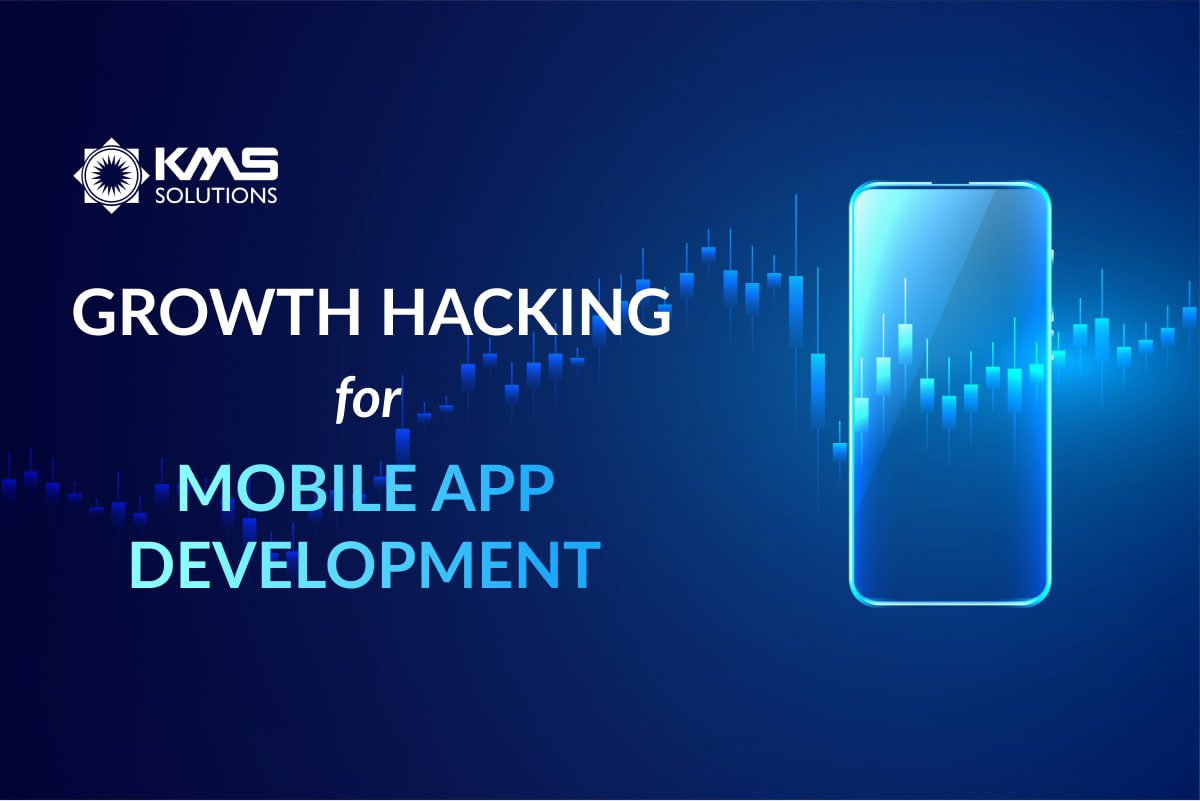These days, mobile applications serve as gateways for numerous services, including payments, messaging, gaming, and many more. To stay up with this large market. app owners and developers may need to consider a growth-driven yet cost-effective strategy called Growth Hacking.
Coined by entrepreneur Sean Ellis in 2010, growth hacking is a strategy that concentrates on consumers and includes multidisciplinary teams. So, in the way of developing a mobile app, how can one implement the “growth hacking” technique effectively?
What is Growth Hacking?
Imagine that your company just launched a mobile app. The primary purpose of your business is to increase user acquisition from 1 to 100, or 1000 users (growth). However, your boss asks you to make more people aware of your product without spending a dime on advertising (hack). The ideas that you apply to “hack” your growth will need to have a sustained effect and is cost-effective, have a referral effect (mainly), and should accentuate the value of the service or product that you are offering.
So, the question is, “How to do growth hacking effectively?” There is NO specific formula, the tactics change continuously from day to day. However, most experts agree that utilizing technology will make your growth hacking technique more practical.
Growth hackers often modify their strategies and back up decisions based on product analytics and metrics. Utilizing those numbers, they refine app features, in-app advertising, app store content, and user interactions accordingly.
Successful growth hackers will need to be highly analytical and detailed throughout the complete process, from forming hypotheses and experiments to analyzing and executing results.
Why is Growth Hacking Important in Mobile App Development?
In mobile app development, there are some key considerations to pay attention to:
- A breakneck pace of market change: User behaviours, mobile platforms, devices, and market conditions are all in continual flux.
- Competition entrance barrier: Develop and submit a mobile app to the marketplaces that are cluttered with competitors and digital noise.
- Limited user ‘head space’: A typical user only has limited time and energy to engage with a few apps every day.
More than just bolstering user acquisition, growth hacking is an interdisciplinary practice that encourages mobile app development teams to:
- Drive the most valuable potential app downloads;
- Develop compelling features and content that are geared toward current users to keep them engaging with the app regularly; and
- Generate product value and psychological hooks that motivate customers to spend time and money in the mobile app to optimize monetization.
How other Brands Implemented Growth Hacking Strategies?
“Growth hacking is not just about finding your first customers. Established brands and companies can use the same techniques to pull in more users.” – Ryan Holiday, author of Growth Hacker Marketing: A Primer on the Future of PR, Marketing, and Advertising.
Some giants in technology have applied growth hacking to find users for their products, including:
- When Hotmail first launched, the technical team added an offer to use Hotmail service at the end of every email sent by its user. Indirectly, the company had turned users into the distribution tool and got the service to be promoted freely. Having a similar idea, Apple also automatically included the unique signature “Sent from my iPhone” in every email sent out from Apple devices.
- Google, when introducing Gmail, had also implemented growth hacking techniques. The company promoted this service via the “invite-only” campaign, where each user will be granted 5 to 10 invites and use them to ask their friends to join the service, creating curiosity.
Growth hacking is not just a method for newly launched products but also helps attract and find more customers for existing services.
- The Airbnb development team coded up an automated tool that whenever there’s a new post on Airbnb, the post will be automatically uploaded to the Craigslist platform, a classified advertisements website that has a vast user base.
The important note from these company successes is that they understand clearly their mobile app user lifecycle. Therefore, they could track every touchpoint to increase engagement, considerations, and profitable interactions.
Growth Hacking Strategies During the Mobile App User Lifecycle
1. User Acquisition
The first stage of the growth hacking continuum is user acquisition, which incorporates a number of strategies to attract new users to your app through both organic and paid channels, all while lowering the cost per new user. This means you can promote your new app via social media, word of mouth, email, app store features, and press opportunities.
Moreover, you can do growth hacking by using experimentation to grow the discoverability of the app in the Google Play and Apple app stores with effective App Store Optimization.
2. User Engagement
In this stage, developers will need to reduce friction wherever possible to provide a seamless customer journey. This starts by making the onboarding process simple and creating familiar senses right out of the gate to get them to habituate when using the app.
The professional growth hackers will analyze for the moments or features that lead to raised engagement, such as logging in, connecting friends, gaining special deals on products or services, and more.
Pitfall to avoid: Spending all of your efforts in user acquisition and none in engagement
When app owners and developers put all of their resources into gaining new users without commensurate investment in keeping them engaged, they consequently wind up burning cash. For most app types, a benchmark D7 retention rate (that is, 7 days after a customer downloads the app) is about 20% – 25%. This means even successful apps may lose up to 80% of their users within the first week, emphasizing the necessity of investing in engagement efforts.

3. User Retention & Monetization
The real challenge for growth hackers is keeping users and making money from them. Ultimately, app makers often seek to maximize revenue-generating user interactions while decreasing user churn rate to a minimum.
By understanding the user customer journey through product analytics tools, growth hackers can know how to orchestrate the constant escalation of relationships with users and, from that, identify the optimal moments to push notifications or suggest upgrades or purchases. This depends not only on the innovative mobile app features and content but also on limiting crashes and bugs to encourage users to pay for certain services.
Besides, focusing on Average day 7 retention rates by app category will give you an idea regarding
Key retention ideas:
- Golden nugget: The critical value or advantage found in the app that keeps the user stay loyal and interested.
- Core loop: Most related to games, this is the basic set of actions a user engages in to progress and level up.
- Return hook: An incentive or mechanism, such as push notifications, that encourages users to re-open your mobile app.
4. Segmentation and microtargeting across the lifecycle
When it comes to the mobile app user lifecycle, it’s essential to notice that not all users are created equally. In fact, there’re some customers who can bring you more profits than others. By segmenting your audience based on profitability or activity levels, you can put more effort into those who have the potential to translate into profits for your business.
Profitability has its own nuances, too. Distinct users may be profitable in various ways. Some users are more inclined to spend money inside the app, while others may never do so. Some are more finicky when watching ads, while others are not. With accurate metrics, companies can identify segments to target for maximum profit.
Using insights to change users segmentation:
- User acquisition strategies
- Personalized product features or content for different groups of customers.
- Sending incentives or push notifications at the right moment to bring inactive users back to the mobile app.
Pitfall to avoid: Considering every user equally valuable
One of the most common blunders in user acquisition and monetization is a failure to analyze downstream metrics to determine whether the target users are valuable or not. Treating users who bring benefits to your company with exclusive offers may keep them retained in your app.
Best Metrics for Mobile App Growth Hacking
So, which analytics are the appropriate ones to shape your growth hacking strategies? It’s difficult to provide a general answer to this question as it mainly relies on the app functionalities, target market, and monetization strategy particular to the app. However, to start determining the appropriate metrics, you can consider the list below. These are the foundational metrics most frequently utilized by experienced growth hackers, but it’s vital to keep in mind that tracking all of them might be overkill.
- App store page conversion rate: Percentage of people that install your app after viewing your app’s description. This rate is available in the App Store and Google Play so you can see how you compare to the competition and have the right strategy to improve.
- Cost Per Install (CPI): The cost of gaining new users through marketing activities. It’s calculated by dividing the campaign’s overall spending by the campaign’s overall measured installs.
- Cost per loyal user: One of the most crucial acquisition metrics, this measures the cost to acquire loyal customers. However, you’ll need to define the attribute of a “loyal user,” whether it is based on purchasing times, subscriptions, push notifications, or any else.
- DAU/WAU/MAU: The number of active users in a given day/week/month. By dividing DAU by MAU, you may determine how often a typical user returns to an app. Typically, a DAU/MAU of 20% is considered ‘good’ for the mobile app industry.
- Retention Rate: The proportion of users who continue to use an app over a certain amount of time. The most commonly measured retention rates are after one day (D1), one week (D7), and one month (D30). Conversely, the churn rate will be used to measure the percentage of users who abandon your app.
- Average Revenue Per User (ARPU): This metric assists in tracking profitability not only across the entire user base but also within the context of user segmentation to identify the most valuable user types. In its most basic form, ARPU is the app revenue divided by the user count.
Tips to Use Growth Hacking Metrics Effectively
Keep it tight: Avoid focusing on too many metrics that end up being overwhelming and underutilized. It’s worth considering choosing a few top metrics that suit your use case, app maturity, and top goals only. For instance, a mobile commerce app should be concentrated mainly on increasing LTV and lowering cart abandonment rates.
Analyze metrics constantly: Keep in mind that the goal of growth hacking is to drive continuous improvement. The suggestion here is to strive to measure the change in metrics over time. Some change gradually and only need semi-regular checking. Some metrics change quickly and need to be observed continuously.
Incentivize properly: Make sure teams are working toward the same KPIs across the corporation.
Analytics Tool to Help you Optimize Mobile App Development
Growth hacking concentrates mainly on data analysis and the continuous experimenting and implementation of new growth strategies. It’s also about using analytics to track the most meaningful metrics in order to achieve your business KPIs and objectives and action accordingly.
Therefore, having powerful, self-serve product analytics can assist you in converting, engaging, and retaining more users effortlessly. Mixpanel is one of the most widely-used product analytics tools that can provide you with interactive reports about your product insights, show the root cause of user drop-off, and dive deeper into your customer journey to find key retention drivers. Moreover, the tool can also help you increase touchpoints during the mobile app user lifecycle and improve their experience. Contact us to try the free trial of Mixpanel here!









